Growing through uncertainty: 10 key takeaways from K:SYD 2025

Between economic volatility, sharp global competition, shrinking resources, and sky-high consumer expectations, marketers in Australia are navigating some undeniably tough challenges. We aim to give teams the tools and resources to navigate the curveballs and build a more resilient, profitable business.
Bringing the Klaviyo community together is a huge part of this. We are smarter when we share knowledge, stronger when we lift each other up, and more capable when we solve problems together.
This is what our first-ever K:SYD event was all about. Klaviyo customers, partners, and industry experts came together at ILUMINA in Sydney for a day of connection and discovery. From thought-provoking research to hands-on workshops, we designed the day to empower our community to leverage data, increase ROI and maximise profitability—even when uncertainty feels like the only certainty.
Here are some of the key takeaways from the event, and how you can act on them.
1. Brand trust is more important than ever
Klaviyo co-founder and chief strategy officer, Ed Hallen, set the scene for the day with an empowering reminder: brand trust and customer experience give you more control over your destiny.
New data from a Consumer Pulse survey Klaviyo conducted in Australia showed that 84% of consumers are cutting back, and only buying from brands they trust. Trusted brands stay closely connected to their customers and move quickly to adapt to change.
Personalisation is another driver of consumer connection: 80% of consumers want their first interaction to be personal, but only 12% of executives say their organisation is “highly mature” in data connectivity.
In that same survey, we learned that good experiences drive revenue, with 44% of respondents reporting they spend more with brands after a positive customer experience, and an additional 28% saying both good and bad experiences influence their spending.
This, Hallen noted, underscores why building longer-lasting, more personal customer relationships is essential in B2C today. He highlighted how Klaviyo’s B2C CRM helps brands understand customers and turn every interaction into a growth opportunity.
Take action: Don’t get too distracted by short-term pricing wars. Instead, focus on delighting your customers with personalised experiences, maintaining product quality, and building a trusted brand.
2. It’s what you do with them that counts
Industry expert and co-founder of Previously Unavailable and Tracksuit, James Hurman, delivered new research that challenged many of the widely-accepted wisdoms around retention, like the idea that keeping more customers is always better.
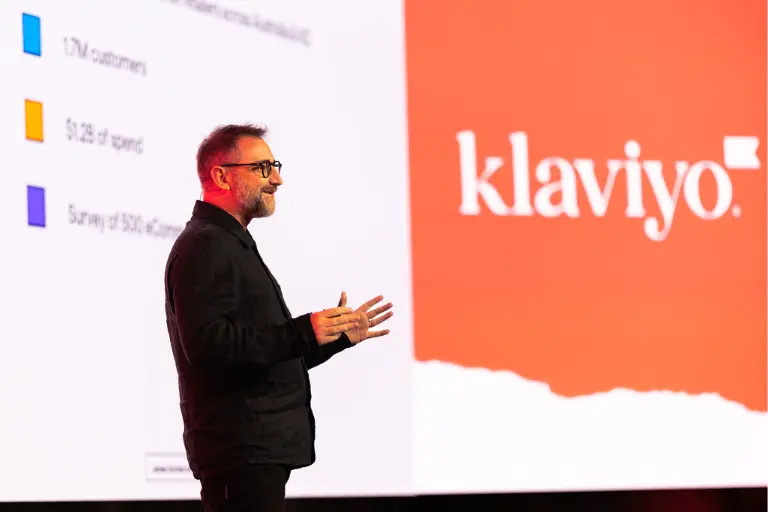
He showed that brands with lower-than-average retention tend to see higher revenue growth. The key commonality among brands with the most impressive growth is not the number of customers they retain, but that they have managed to increase the spend of retained customers.
We also learned that brands without loyalty programs grew at over three times the rate of brands with loyalty programs. This comes back to the point above: a loyalty initiative is only going to help grow your business if it incentivises spend increases from the customers you retain.
In short, it’s not about the retained customers you have, it’s about what you do with them.
Take action: Download the 15-page guide to learn how customer service, visibility into the customer journey, personalisation, and analytics can help grow the value of your retained customers.
3. The future of retail is growth with efficiency
Today’s fastest growing businesses aren’t just growing—they’re doing it efficiently. To achieve this, Profit Peak co-founder and CEO Carla-Penn Kahn urged teams to focus on margins and profitability.
In our breakout session Penn Kahn shared four key levers for doing just that. Most importantly: track your margins and maximise them through smart product strategy, inventory planning, and operational efficiency. This includes discounting sensibly, especially during major sales events like Black Friday, Cyber Monday when retailers can get carried away competing for attention.
Penn Kahn stressed the importance of creating synergy between your paid and owned channels to serve every stage of the funnel and control long-term ROI.
Take action: Download Carla Penn Kahn’s guide to maximising efficiency in 2025 and beyond. You’ll learn how to maximise your margins, increase your profit, and use Klaviyo to identify and act on the audiences, products, and messages driving profit.
4. Unlock your data to unblock your growth
During our breakout sessions, we heard from brands of all shapes and sizes, and individuals working in different parts of the business, from founders and CEOs to CRM specialists and marketing leads. It became clear that no matter where you sit, centralised, clean, and accessible data has never been more important for growth.
Jennifer Gilbert, head of eCommerce at Nutra Organics, and Kellie Hannon, digital and online trading manager at P.E. Nation both spoke about the power of integrating zero-party data from customer quizzes and surveys in Klaviyo, and using it to personalise messaging.
Denver Styles, CRM specialist at INTERSPORT, and Morgan Riddle, digital ecommerce marketing & communications manager at Happy Way agreed that data is their number one tool for gaining a competitive edge. By consolidating data in Klaviyo, INTERSPORT grew their share of online sales from CRM by 4.9x and achieved a 350% YoY increase in returning customer rate.
Take action: Consolidate your data in Klaviyo B2C CRM. Use it to understand your customer, fuel personalisation, get a clear view of attribution, and make the most of AI.
5. Brand is the backbone
The return to brand building is real, and it deserves your attention. In Klaviyo’s recent Future of Consumer Marketing report, we learned nearly over half (52%) of consumers who spend more than $100 with brands say brand values matter more in 2025 and 25% of retail/ecommerce consumers always purchase from their favourite brands.
At the close of the day, Go-To Skincare founder Zoë Foster Blake shared the role storytelling has played in growing her brand from a passion project to a globally-loved brand. In a confusing and saturated market, Go-To Skincare cut through by building a brand that demystifies and educates.
“I had operated in a world where I’d been trying every product under the sun, and as a beauty editor, I couldn’t wade through it all. How is a customer supposed to? So I built the Go-To brand based on education. I said, I’ll hold your hand and I’ll show you how to use products like an AHA,” she said.
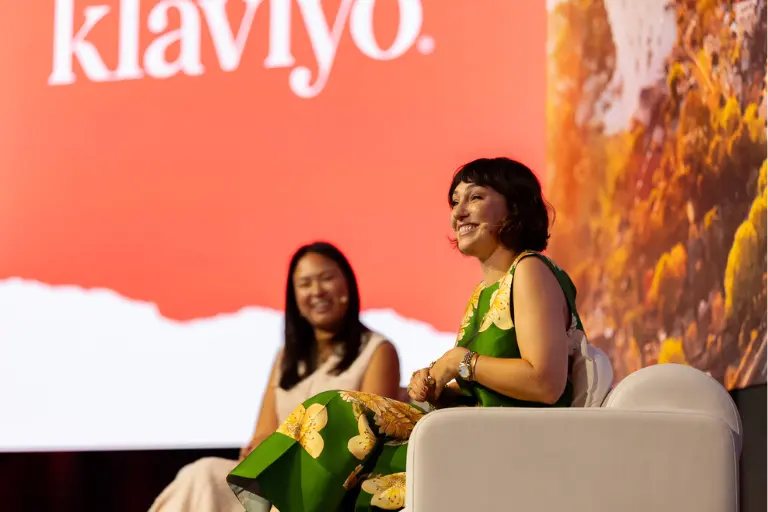
Foster Blake reminded us a customer’s experience with a brand is a sum of all the interactions, big and small, in-store and online. She spoke to the importance of customer service, saying it should be seen as an opportunity to delight, even in difficult situations. “A Karen is just a Cindy that needs love,” she quipped.
During our Shopify-hosted session, driving growth through innovation, Locke Fitzpatrick, digital marketing manager at LSKD said he views stores as community hubs. This community spirit extends to the online world, where LSKD actively involves and listens to their community groups to innovate.
Take action: If brand has slipped down the priority list, you’re not alone. Start by improving the customer journey, bridging the gap between customer service and marketing, and infusing your brand into every moment — from transactional messages to major campaigns.
6. Unlock the power of RFM analysis
RFM analysis (recency, frequency, and monetary analysis) is a superpower for brands looking to drive more revenue from retained customers and understand where customers fall on the loyalty spectrum.
During a breakout session, senior customer education specialist, Lissy Newphry, shared how you can use RFM analysis to build targeted segments quickly. You can use these in campaigns that drive more revenue from your champions and nudge at-risk customers to re-engage.
It can also be used to understand how campaigns impact loyalty. During a major sales event, coffee retailer Pablo & Rusty’s decided to forgo huge discounts and instead provide a smaller discount on select products, while donating a percentage of online sales to a local non-profit. They used RFM analysis in Klaviyo and saw a 10.8% increase in their loyal and recent customer segments in Q4 2024, giving them confidence to run similar campaigns.
Take action: Switch on Marketing Analytics and start using RFM analysis to spot opportunities to target your customers with personalised messages based on where they fall.
7. Own your home
Carla Penn Kahn compared paid media to renting and owned media to owning your home. Yes, building owned channels takes investment. But the long-term control over brand, margins, and customer relationships makes it worthwhile.
Start by shifting paid efforts toward acquiring loyal, long-term customers. Then focus on keeping those customers engaged across every touchpoint and building a community customers feel connected to.
During Penn Kahn’s session, Aaron Langer, co-founder and CEO at Arms of Eve and Sam Reece, general manager at Babyboo explained how standing for something more than product helps them foster that community connection. Arms of Eve champions conscious self-expression, working with accredited artisans, reducing waste, and sharing their sustainability journey transparently.
Meanwhile, Babyboo has built a powerful global brand rooted in empowerment, diversity, and style. With a strong brand and a base of loyal, repeat customers, Reece said the pressure of tight inventory management is eased, “I’m not scared of selling out, we know we’ll get that customer back.”

In her breakout session, Lissy Newphry showcased a simple, tactical way to keep customers coming back to your home: Klaviyo’s Customer Hub. Customer Hub is a tool that lets customers quickly find what they need, from coupon codes to shipping updates. With dynamic content blocks, you can guide them to other products or information, boosting per-customer revenue and deepening loyalty.
Take action: Rebalance your paid and owned strategy, and switch on Customer Hub to keep your existing customers in your home at a key loyalty-building moment.
8. Double down on the tools with strong ROI
Return on investment (ROI) should be the leading indicator that a tool, channel, or campaign is working — not cost. With so many channels and messages, getting a clear view of attribution to accurately measure ROI is not always easy. But too many marketers are making it more difficult than it needs to be by working in disparate tech systems, or tools with murky attribution models.
Throughout the day, we heard from brands like Chemist Warehouse and Mountain Culture Beer Co, who look to ROI, rather than cost, to determine how they spend their time and money. After noticing the strong ROI they were receiving from email in Klaviyo, they doubled down on activity — and reaped the rewards. Mountain Culture Beer Co saw a 359x ROI with Klaviyo in Q1’2025 and Chemist Warehouse have see a 46.8% increase in conversion rate year to date.
SHEIKE is another Klaviyo customer who unlocked growth after getting clear on attribution. “Once we consolidated SMS in Klaviyo, we could see last-click attribution in the platform, and it was closely aligned with the last-click attribution we see in Google Analytics,” says Hayley Rosales, CRM manager at SHEIKE. “This gave us the confidence to invest more in SMS and to make strategic decisions about where we communicate with customers, especially during key sales periods.”
Take action: Make sure you understand the attribution model your tools use, and track ROI closely. If you are using different providers for SMS and email, consolidate them in Klaviyo to get a clear picture of the channel driving the most revenue.
9. Create the uncopyable
The sincerest form of flattery is imitation, but the leading indicator of product innovation is something that can’t be copied.
During our founders panel, Paire co-founder and CEO Nathan Yun spoke to the unique material mix that makes Paire impossible to replicate. He said, “When you’re really obsessed with your product, the effort is really defensible — because no other brand is willing to spend that much time on product.”
Mountain Culture Beer Co. co-founder Harriet McCready explained how refining their award-winning beer through direct customer feedback helped her create a standout product that is difficult to replicate. Online and offline experiences are essentially to gathering this feedback and creating a unique customer experience. “We couldn’t be a retail only business, but we couldn’t be an ecommerce business only either. They work closely together,” she said.
Offline experiences are another way to create the uncopyable. The Memo co-founder Phoebe Simmonds said, “When we opened our store in Fitzroy, we had a line around the block. This is not just a baby store, it is an experience. Having a baby is a very emotional thing, and people want to connect with our brand and our community in those moments of vulnerability.”
Being thoughtful about product innovation and experiences could help you win more high-revenue retained customers too. Our Consumer Pulse survey indicated that product quality (41%) is the leading driver of brand loyalty, coming in well above frequent discounts (34%), and that 44% of consumers report spending more with brands after they have a positive experience.
Take action: Do things differently and find ways to make your brand uncopyable. It could be through product innovation or an unforgettable, meaningful brand experience.
10. Best-in-class channels, AI innovations, and a better way to do customer service: All on Klaviyo’s roadmap
Kelly Thacker, VP product and community at Klaviyo and Gilbert Hsu, product manager at Klaviyo, took the stage to share what’s on Klaviyo’s product roadmap for 2025, including new channels, AI innovations, and more.
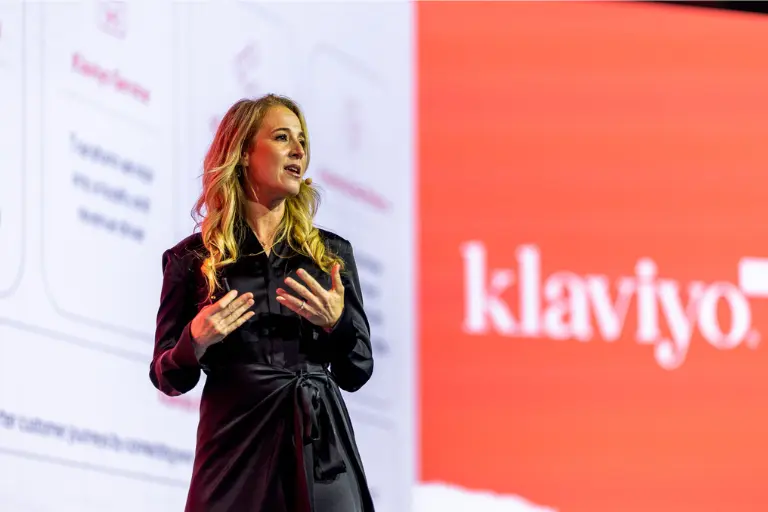
Core to our product investment is best-in-class channels, with innovation across channels and a soon-to-launch Omnichannel Campaign Builder that makes it easy to plan campaigns that span multiple channels and unfold over time.
In SMS, RMS (Rich Communication Services) is coming, and it will unlock engaging, branded messaging experiences for our customers. In Q3, you will see Smart SMS and profile send times, a feature that leverages our Klaviyo AI to find the optimal time to reach each customer to maximise engagement.
Now a huge one for the APAC market, our WhatsApp private beta is currently live, offering a more interactive, real-time messaging experience that customers are already familiar with.
Because WhatsApp is integrated into Klaviyo, it will have access to our built-in data platform, as well as our attribution and reporting engine. This allows brands to gain the rich insights they need, to deliver personalized experiences for every customer.
All of these channels will come together in our upcoming Omnichannel Campaign builder to reach customers exactly where they are. It’s a brand new type of campaign that can target multiple audiences, leverage multiple channels, and span over multiple days, all orchestrated in a single unified visual builder.
In Klaviyo Service, we are continuing to invest in Customer Hub, and adding AI Agent and Unified Inbox to help you give customers the kind of service they want, exactly when they need it. These innovations are essential to retaining more high-revenue customers.
Take action: Bookmark our What’s New page and sign up for feature alerts to ensure you see our launches as they happen. There’s so much more we’re cooking up for the year ahead.

Related content

Klaviyo welcomes Chano Fernández as Co-CEO to help accelerate global growth and lead the next era of AI-powered customer experiences.
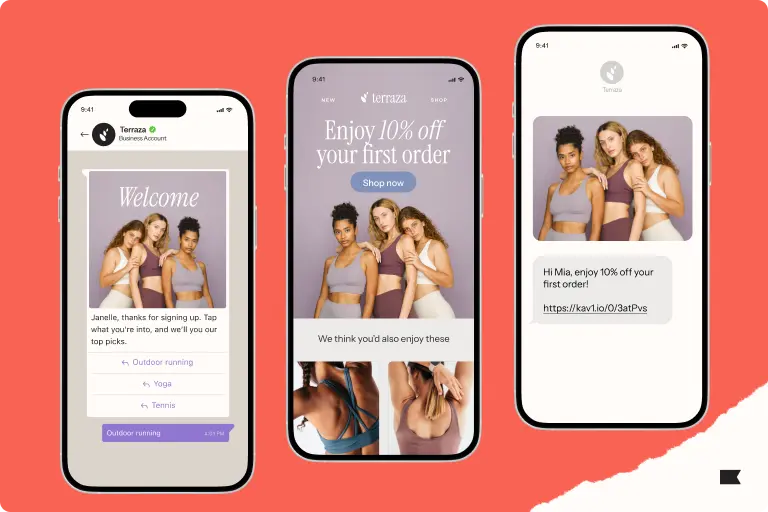
Discover how cross-channel marketing and the rise of SMS shaped BFCM 2025. Learn why email + text orchestration drove record engagement, efficiency, and revenue.
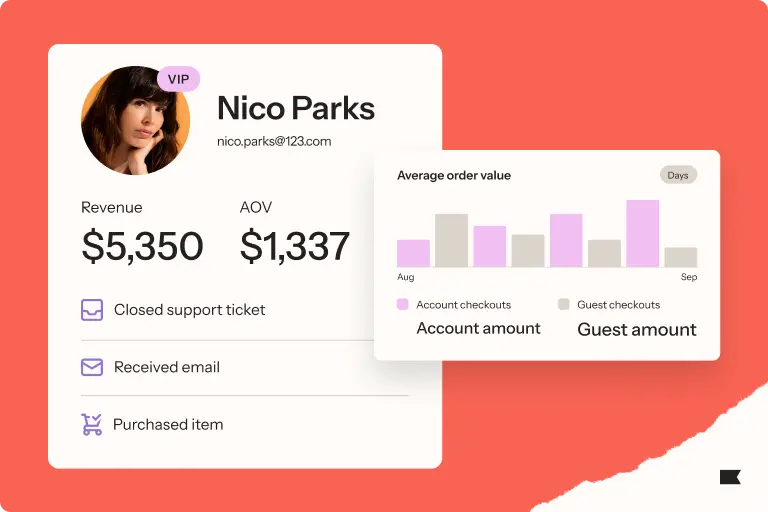
AOV stayed strong during BFCM 2025 despite rising prices. Learn why average order values held steady, what drove pricing power, and how brands can protect margins.